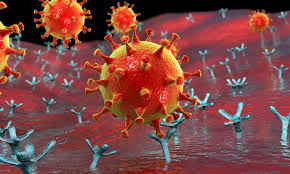SARS-CoV-2 New Variants:

Variants have emerged independently in several countries, and the latest research indicates that the virus is changing quickly (mutation) and it may continue to develop towards evading currently available vaccines.
- The SARS-CoV-2 virus is responsible for causing coronavirus disease (Covid-19).
- The mutation is an alteration in the genetic material (the genome) of a cell of a living organism or of a virus that is more or less permanent and that can be transmitted to the cell’s or the virus’s descendants.
- The genomes of organisms are all composed of Deoxyribonucleic Acid (DNA), whereas viral genomes can be of DNA or Ribo Nucleic Acid (RNA).
- When cells multiply, the DNA within them replicates as well, to make copies for the new cells. During replication, random errors are introduced into the new DNA.
- While the errors in DNA virus genomes can be corrected by the error-correcting function of cells in which they replicate, there are no enzymes in cells to correct RNA errors. Therefore, RNA viruses accumulate more genetic changes (mutations) than DNA viruses.
- Three key Receptor-Binding Domain (RBD) mutations K417N/T, E484K, and N501Y are found invariants that emerged in South Africa and Brazil.
- The UK variant has the N501Y, P681H mutation.
- Viruses with mutations within the receptor-binding domain (RBD) of the Spike protein have the most potential to evade antibodies that develop as a result of natural infection or vaccination.
- The RBD binds the cellular receptor allowing the virus to infect cells, and anti-RBD antibodies neutralize the virus.
Vaccine Test Against Emerging Variants:
- Indirect tests are done in laboratories to assess if an emerging variant might escape antibodies developed after natural infection or vaccination.
- Serum (the blood components that contain antibodies) from recovered patients or vaccinated people, and antibodies are known to neutralize the original virus, are tested to determine whether the variant viruses evade antibodies.
- The effectiveness of serum or antibody is expressed as an inhibitory concentration (IC) or plaque reduction neutralization titer (PRNT) value.
- The IC50 or PRNT50 value is the reciprocal dilution of serum or antibody that neutralizes 50% viruses in the sample.




